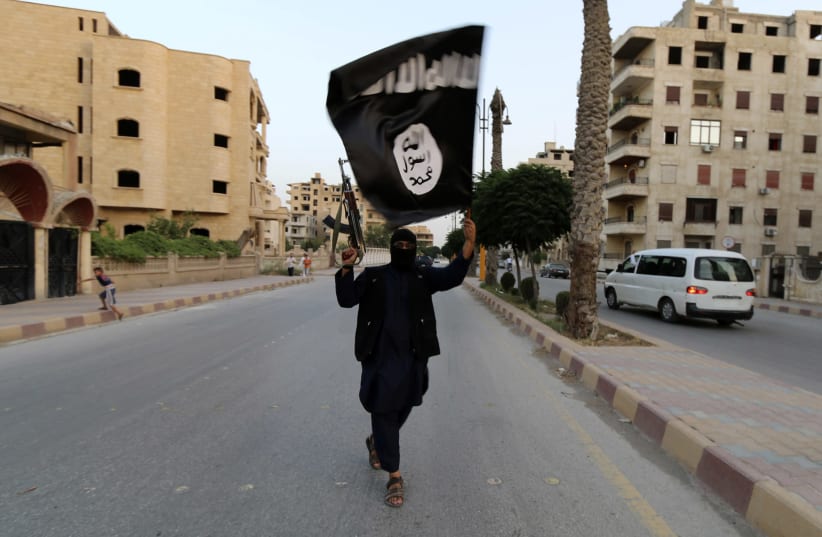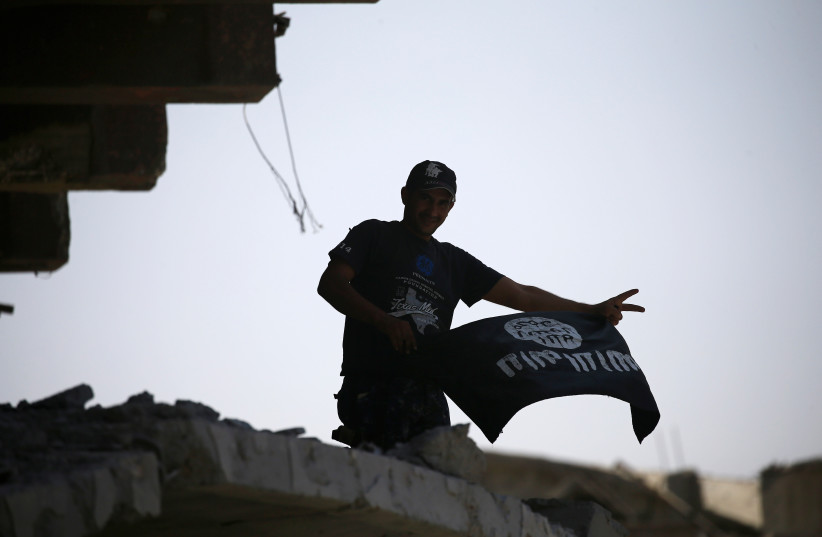The Islamic State (IS) militant group has appointed a previously unknown figure as its head after its leader blew himself up in October while being besieged by former anti-government rebels in southern Syria, those involved in the clash told Reuters.
IS selected Abu al-Hussein al-Husseini al-Quraishi as its new leader, a spokesman for the group said in a recording. He did not offer further details on the new leader.
It was both the first time IS's top leader was killed in an operation that did not involve the US-led coalition, and the first time an IS leader was killed in southern Syria, rather than the north.
Abu al-Hassan al-Hashemi al-Quraishi was killed in an operation carried out in Deraa, the southern province where Syria's uprising first kicked off in 2011, according to those involved in the fighting as well as the US military.
Deraa returned to Syrian army control in 2018 following Russian-brokered reconciliation deals that saw rebels hand over heavy weapons and be incorporated into pro-government units.
Quraishi and his aides had been discovered hiding out in a house in the town of Jasem, according to former rebels involved in the clash, relatives of others who died in the fighting, and residents.
"The leader and a companion blew themselves up with suicide belts after our fighters succeeded in storming their hideout," said Salem al Horani, a resident and former rebel who helped besiege the three houses where the IS cell was discovered.
Local sources said Quraishi was among dozens of IS fighters who came to southern Syria earlier this year from other hideouts in the sparsely populated Syrian desert, where they had taken shelter after losing their last enclave in Syria in 2019.
Southern flashpoint
The southern province had become a flashpoint of fighting in recent months as IS fighters waged hit-and-run attacks against the Syrian army and their allies in the desert areas at an increasing pace, according to Western intelligence sources.
Aymenn Jawad al-Tamimi, an Arabic translator and editor at Middle East-focused consultancy Castlreagh Associates, said security gaps in Deraa offered Islamic State a safe space to hide, though the group did not advertise its presence there.
"In general the group's leadership has bad options wherever they are in Iraq or Syria," Tamimi told Reuters.
"It is really a matter of finding the least bad option: in general this means where the US-led coalition has the least surveillance and fewest intelligence assets," he said, which included southern zones.
The US military statement did not mention the Syrian army nor its ally Russia, which had announced in recent months that their joint operations had targeted IS cells in Deraa.
In an audio recording released on Wednesday, an IS spokesman said Quraishi was killed while "fighting enemies of God," and said Abu Hussein was the next leader, without elaborating.
"I don't think anyone has any information about this person. it will take some time, it takes time to verify," said Hassan Hassan, author of a book on Islamic State.
"IS is in dissarray, they have been even more cautious about producing any information about (their leaders). They don't have the same confidence, they are on the run," he added.
Islamic State emerged from the chaos of the civil war in neighboring Iraq and took over vast swathes of Iraq and Syria in 2014. Then-IS leader Abu Bakr al-Baghdadi declared an Islamic caliphate from a mosque in the northern Iraqi city of Mosul that year and proclaimed himself caliph of all Muslims.
Islamic State killed and executed thousands of people in the name of its extreme interpretation of Islam before it was territorially defeated in Iraq in 2017 and Syria in 2019.


